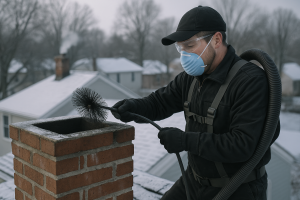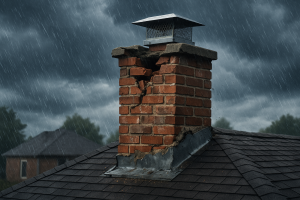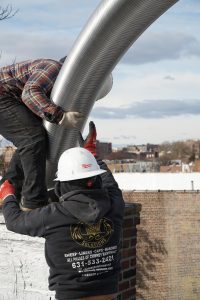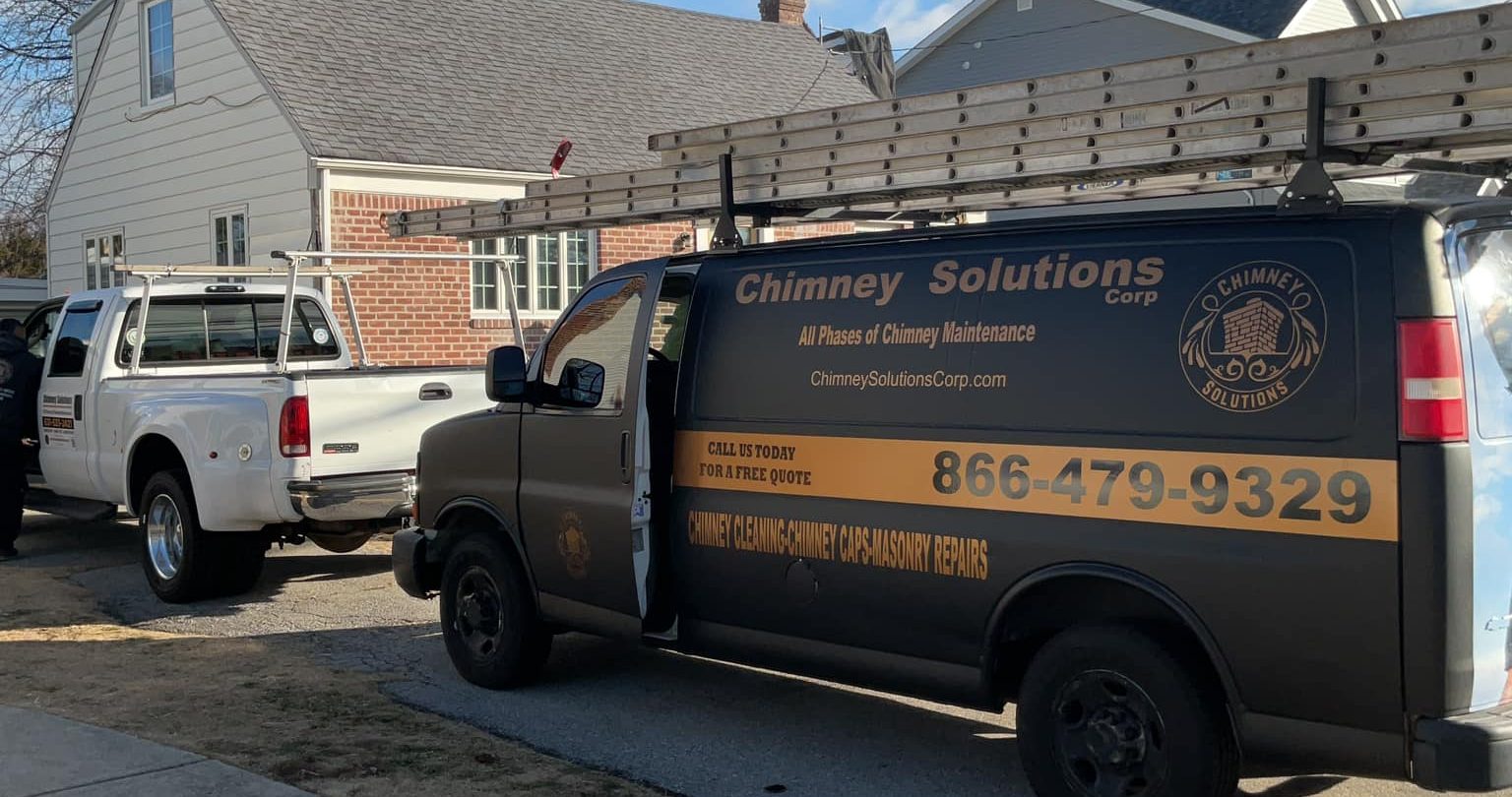Commercial Chimney Brick Pointing: Extending the Life of Your Chimney
Regular chimney maintenance is an essential aspect of maintaining a well-maintained chimney. Whether you have a brick chimney, masonry chimney, or a metal chimney, ensuring your chimney is in optimal condition is vital for safety, functionality, and aesthetics. One of the most effective ways to preserve the chimney structure and protect it from moisture damage is through the process of chimney repointing and chimney pointing.
Chimney pointing and repointing are techniques that help maintain the stability of the chimney by addressing damaged mortar, loose bricks, and brick joints. In this comprehensive guide, we’ll delve into these processes, when they should be performed, their benefits, and the impact they have on the entire chimney’s longevity and aesthetic integrity.
What is Chimney Brick Pointing and Repointing?
Chimney pointing and repointing refer to the process of repairing the mortar joints between bricks in a brick chimney. Over time, these joints can weaken due to exposure to extreme weather conditions, moisture penetration, and other environmental factors. Repointing involves removing old, deteriorated mortar and replacing it with fresh mortar, while pointing is the process of renewing mortar joints that are not yet fully deteriorated but show signs of wear.
Why is Chimney Pointing and Repointing Important?
The masonry structure of your chimney is a vital part of the chimney stack, and without proper maintenance techniques, small signs of mortar deterioration can lead to severe damage. When mortar deteriorates, water penetration becomes a real threat, leading to damage inside and outside the chimney. Without regular inspections and timely repairs, issues such as water leaks, moisture damage, and even chimney leaks can cause structural instability.
Pointing and repointing are crucial to:
- Restore the Strength of Your Chimney: The masonry joints that hold the chimney’s bricks together can weaken over time, leading to structural concerns. Properly executed pointing or repointing prevents further deterioration and reinforces the chimney’s structure.
- Protect Against Water Damage: The chimney crown is particularly susceptible to water infiltration. If mortar joints are left unchecked, water can penetrate into the chimney, damaging the chimney liners and causing rusting, cracking, or even internal damage to the flue liner.
- Preserve the Aesthetic Integrity: A beautiful chimney enhances the appeal of buildings, whether you own a residential or commercial property. Well-maintained masonry can elevate the aesthetic of your building while also improving curb appeal.
- Improve Efficiency: A properly maintained chimney ensures better ventilation and reduces the risk of a chimney fire. Chimney tuckpointing and repointing create optimal conditions for airflow, preventing the buildup of creosote, which could lead to a dangerous fire.
When Should You Have Your Chimney Repointed?
Signs Your Chimney Needs Repointing
Understanding the signs of mortar deterioration and other signs of damage is crucial for recognizing when your chimney needs attention. Here are some key indicators that it’s time for a professional brick mason to inspect your chimney:
- Visible Cracks: Cracks in the mortar or between bricks are clear signs that your chimney needs to be repointed. Small minor cracks can easily be fixed through pointing, but larger gaps or cracks may require repointing.
- Loose or Fallen Bricks: If bricks are falling off the chimney or feel loose to the touch, the mortar is no longer serving its structural function, and masonry repairs are necessary.
- Water Leaks: Water penetration is one of the primary causes of chimney damage. If you notice water leaks inside the chimney or on the exterior of your building, it’s a sign that the mortar chimney is no longer sealing properly, and repointing is needed.
- Erosion of Mortar: Over time, constant exposure to rain, snow, and direct sunlight can erode the mortar. If you notice that the mortar is crumbling or showing signs of deterioration, repointing is crucial to restore its function.
- Signs of Water Damage: Trapped water can cause significant damage to your chimney. If you notice discoloration or mildew on the chimney, it may indicate moisture damage caused by degraded mortar joints.
The Chimney Repointing Process
Repointing is a meticulous process that requires a professional’s expertise to ensure long-lasting results. Here’s what to expect during the chimney repointing process:
- Inspection and Assessment: A detailed inspection by a professional brick mason helps to identify areas of concern. Annual inspections are crucial to catch early signs of deterioration before they become expensive problems.
- Cleaning: Old mortar is removed using specialized tools such as a wire brush, wheeled skate-style raking tool, or other advanced masonry tools. The removal of old mortar is important to create a clean surface for the new mortar to bond to.
- Repointing the Mortar Joints: Once the mortar is removed, the mason will fill the joints with high-quality materials. The new mortar should be a classic choice that matches the original in terms of color and composition. It’s vital to use compatible materials to ensure the longevity of the repair.
- Curing: After the mortar is applied, it’s essential to allow it to set properly. Curing time varies depending on weather conditions and mortar type. This stage is important for ensuring the mortar bonds securely and provides proper ventilation.
- Final Inspection: A professional inspection will ensure the repointing is up to standard and that there are no missed areas. This inspection is crucial for determining that the work was completed efficiently and effectively.
The Cost of Chimney Repointing
The cost of repointing depends on the extent of the damage, the type of chimney, and the height of the chimney. On average, labor costs for brick chimney repair can range from $500 to $3,000. The actual cost will vary based on the square footage, the complexity of the job, and whether any major repairs are needed to restore the chimney.
Related questions people ask:
- What is the average cost to have a chimney repointed?
- How much does brick repointing cost?
Getting an accurate estimate from a professional ensures that you can make informed decisions based on the condition of your chimney.
Professional Masons vs. DIY Repointing
While DIY repointing may seem appealing to some property owners, it is highly recommended to hire professional masons for masonry construction. Professionals have the expertise, experience, and specialized equipment to complete the job properly, ensuring long-lasting and high-quality results. Attempting to repoint without the proper knowledge and tools can lead to incorrect application, which could worsen moisture damage and water leaks.
Preventative Maintenance: Extending the Life of Your Chimney
Repointing is part of a larger preventative maintenance plan that should include routine inspection and timely repairs. Chimney sweeps, regular checks for signs of water damage, and keeping the chimney free of creosote buildup are key practices in extending the lifespan of your chimney. Maintaining proper upkeep of your masonry chimneys helps avoid extensive repairs down the road.
Conclusion
Chimney pointing and repointing are fundamental techniques for maintaining the integrity and beauty of your chimney. Whether you own a commercial building or a residential property, timely repairs and regular inspections will save you from extensive repairs and costly replacements. By hiring professional brick masons and using high-quality materials, you ensure your chimney



